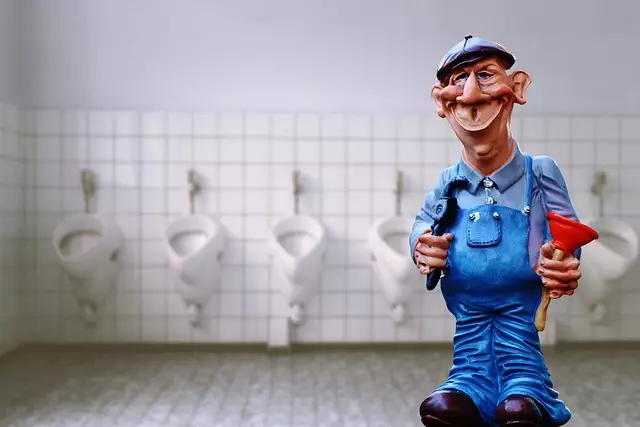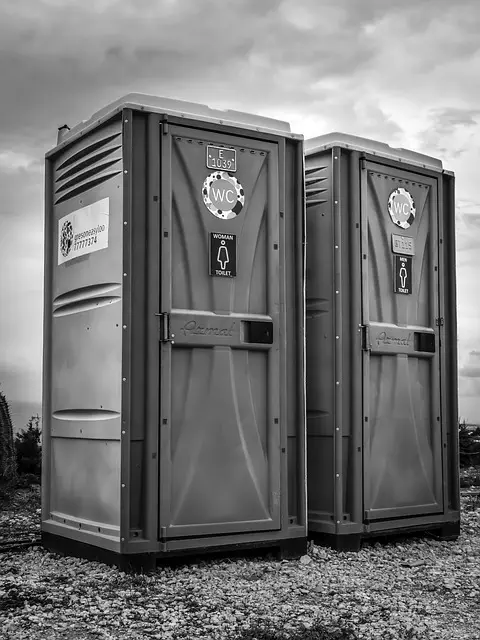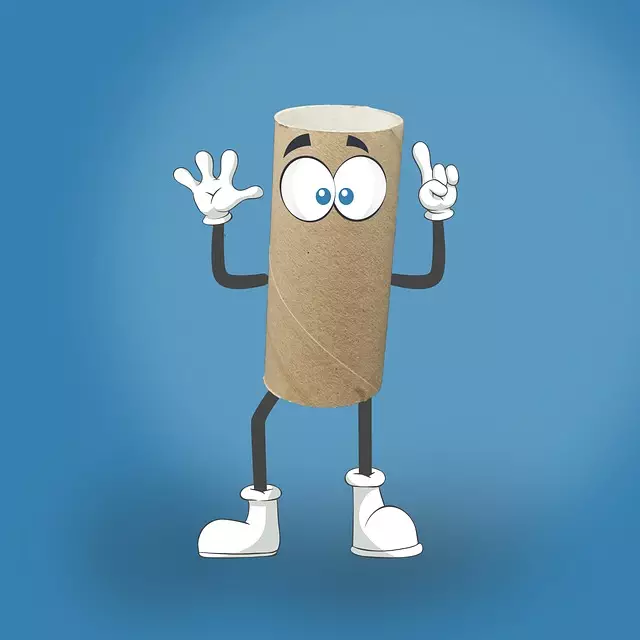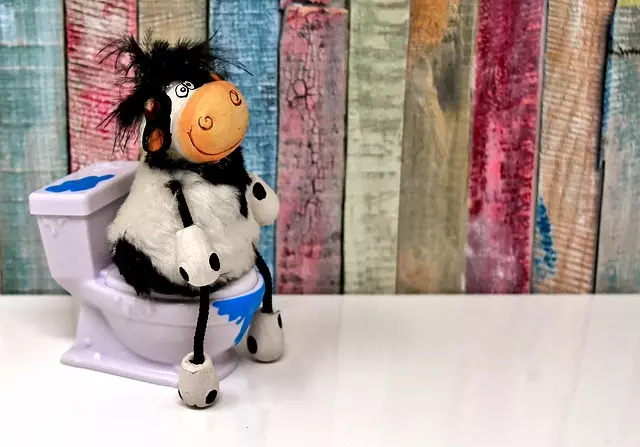undertaking a DIY toilet installation in Toledo requires careful preparation and adherence to local building codes. Essential tools such as a wrench set, level, plumber's putty, screwdriver, and caulk from Toilet Installation Tools Toledo are crucial for the task. The process involves securing the water supply line, ensuring a leak-proof connection to the toilet tank, and verifying that the toilet is level and well-anchored. Regular checks for proper operation and signs of wear on components like the flush mechanism and refill valve, along with monthly inspections of the base seal, are essential for long-term performance and efficiency. Maintaining a clean toilet surface and using compatible cleaning agents will help preserve its finish and extend its lifespan. Following these guidelines ensures compliance with the Toilet Installation Process and contributes to a successfully installed Toledo toilet.
Embarking on a toilet installation project in Toledo, Ohio? This comprehensive guide equips you with everything needed for a successful endeavor. From assembling the right tools—essential for any DIY Toilet Installation—to understanding the intricacies of the process, this article covers it all. We’ll walk you through each critical step, emphasizing safety precautions unique to Toledo homes. Whether you’re a homeowner tackling the task yourself or a professional looking for a refresher, our detailed guide will ensure your new toilet is properly installed, water-efficient, and well-maintained. Prepare to transform your bathroom with confidence, one step at a time.
- Preparing for Toilet Installation with the Necessary Tools in Toledo
- Understanding the Toilet Installation Process in Toledo Homes
- Step-by-Step Guide to DIY Toilet Installation in Ohio
- Essential Safety Precautions When Installing a Toilet in Toledo
- Water Supply and Drain Connections for Toilet Installation in Toledo
- Finalizing the Installation: Setting, Sealing, and Caulking the New Toilet
- Post-Installation Checks and Maintenance Tips for Toledo Toilets
Preparing for Toilet Installation with the Necessary Tools in Toledo

When tackling a toilet installation in Toledo, having the right tools and understanding the process is crucial for a successful DIY project. The toilet installation tools required for this task are both specialized and common, ensuring that you can manage water supply lines, make precise measurements, and handle the weight of the toilet itself. Begin by gathering essential items such as a wax ring, toilet bolts, a level, a screwdriver, pliers, a wrench set, a hacksaw, a measuring tape, a marker, and a garden hose or a water testing kit. For the shutoff valve and the toilet base, a valve combination tool or adjustable wrench will be necessary. It’s equally important to have protective gear like gloves and safety glasses on hand to keep you safe during the installation process.
Before you start, make sure to turn off the water supply to the toilet, flush the existing toilet to drain the remaining water, and disconnect the water supply lines. Remove the old wax ring from the flange and examine it for damage or deformation that might affect the new installation. Place a new wax ring on the bottom of the new toilet base, aligning it with the waste outlet. Carefully lower the toilet into position, ensuring that it is level to prevent wobbling or rocking, which can lead to leaks and inefficiency. Now, secure the toilet to the floor with the provided bolts, using a marker to mark the floor where you will drill pilot holes if necessary. Connect the water supply lines, check for leaks, and use the level again to ensure the toilet is perfectly aligned. After completing these steps, run water through the toilet to test for leaks and proper function, confirming that your DIY toilet installation in Toledo is complete and ready for use.
Understanding the Toilet Installation Process in Toledo Homes

When tackling a DIY toilet installation in Toledo homes, it’s crucial to have a comprehensive understanding of the necessary tools and the process involved. The toilet installation tools required for this project include a level, measuring tape, marker, wrench set, adjustable wrench, screwdrivers, a hacksaw, plumber’s putty, a utility knife, and a toilet wax ring. Safety gear such as gloves and eye protection are also advisable. The installation process begins with shutting off the water supply to the old toilet and draining any remaining water. Next, remove the old toilet by unbolting it from the floor and carefully setting it aside. Prepare the area by cleaning the flange, ensuring it’s at the correct height for a new wax ring placement. Position the new toilet over the sewer line, applying the wax ring around the base to create a watertight seal. Secure the toilet to the floor with bolts, ensuring it’s level to prevent rocking or uneven wear. Connect the water supply lines, making sure to use the correct washers and tighten the fittings without over-tightening to avoid cracking the toilet tank or bowl. After reattaching the toilet to the waste outlet, check for leaks, especially at the base. Finally, caulk the space between the toilet and the floor for a neat finish. Throughout the process, adherence to local plumbing codes and regulations is essential. For those who prefer professional assistance, hiring a licensed plumber in Toledo can ensure a job well done, providing peace of mind and avoiding potential issues down the line.
Step-by-Step Guide to DIY Toilet Installation in Ohio

Embarking on a DIY toilet installation in Ohio can be a straightforward process with the right preparation and understanding of the steps involved. To begin, gather the necessary toilet installation tools in Toledo, which typically include a wrench set, a screwdriver, a level, a marker or chalk, a handsaw or reciprocating saw, a toilet wax ring, a toilet jacket or gap sealer, and protective gear like gloves and safety glasses. These tools are crucial for maneuvering through the installation process with precision and care.
Before removing the old toilet, shut off the water supply and flush the tank to drain the remaining water from the system. Use the wrench to disconnect the water supply line from the base of the toilet. Carefully cut the bolts holding the toilet in place, if necessary, and remove the old unit. Prepare the area for the new toilet by applying the wax ring on the closet flange where the base of the new toilet will sit. Lower the new toilet into position, gently rocking it to spread the wax evenly. Connect the water supply line, ensuring a tight seal to prevent leaks. Proceed with attaching the bolts through the base of the toilet and into the flange, ensuring level alignment using the level tool. Once securely in place and properly connected to the drainpipe, the toilet installation process is complete. Always follow local building codes and ensure compliance with Ohio’s plumbing regulations. Remember to use the toilet installation process guidelines as a reference throughout your project for a successful DIY toilet installation.
Essential Safety Precautions When Installing a Toilet in Toledo

When embarking on a DIY toilet installation in Toledo, safety and precision are paramount to ensure a functional and durable setup. Before commencing the project, assemble the necessary toilet installation tools, which typically include a wrench set, a level, a screwdriver, a hacksaw, a marker, pliers, a toilet flange positioning tool, and a garden trowel for excavation purposes. These tools are essential for managing the water shut-off, connecting pipes, cutting through old wax rings, and aligning the new toilet properly.
The toilet installation process in Toledo involves several critical steps to maintain both safety and functionality. Begin by turning off the water supply to the toilet and flushing the existing toilet to drain the tank and bowl. Use the wrench to disconnect the water supply lines from the valve located behind the toilet. Carefully remove the old wax ring sealing the toilet to the floor, then gently lift and set aside the old unit. Ensure that you clean the floor area thoroughly to prepare for the new installation. When positioning the new toilet over the drain pipe, use the flange positioning tool to create a level and secure alignment. Apply a fresh wax ring on the closet flange, lower the new toilet onto the wax ring, and press it firmly into place. Connect the water supply lines, ensuring they are tight and free from leaks. Finally, caulk the base of the toilet to the floor for a watertight seal. Throughout the process, adhere strictly to local building codes and consider hiring a professional if you are unfamiliar with any aspect of the installation process. Regularly check your work against the toilet installation checklist to ensure all safety precautions are met and that the installation is completed effectively.
Water Supply and Drain Connections for Toilet Installation in Toledo

When tackling a DIY toilet installation in Toledo, understanding the water supply and drain connections is paramount for a successful outcome. The process begins with shutting off the main water supply to prevent any leaks or flooding during installation. In Toledo, where older homes are common, it’s crucial to locate and access the existing water lines that will feed your new toilet. Use the appropriate toilet installation tools such as a wrench or channel locks to disconnect the old toilet and reroute the supply lines if necessary. The supply lines should be connected to the nearest cold-water valve, ensuring that the pipe slopes downward toward the fixture to maintain proper water pressure.
For the drain connections, it’s essential to understand local building codes as they can vary. In Toledo, the waste line from the toilet must connect to the city sewer or septic system properly. A toilet installation tools checklist for this step would include a wax ring, closet flange, plumber’s putty, and a auger for cleaning out the drain if needed. The flange should be securely fastened to the floor, and the wax ring placed between the bottom of the toilet and the flange to create a watertight seal. After the toilet is set into place, connect the water supply, turn on the valve slowly to check for leaks at the base and around the tank bolts. If everything is secure and dry, your DIY toilet installation process in Toledo is complete, leaving you with a functional and efficient addition to your home.
Finalizing the Installation: Setting, Sealing, and Caulking the New Toilet

Prior to finalizing your toilet installation in a residence or commercial setting, it’s imperative to gather all necessary tools for the task. Utilize the Toilet Installation Tools Toledo offers, which typically include a level, wrench set, plumber’s putty, a screwdriver, and caulk. These tools are essential for ensuring that the new toilet is installed securely and seamlessly. Begin by connecting the water supply line to the bottom of the toilet tank, securing it with the appropriate fittings and washers to prevent leaks. Next, set the toilet into position, aligning it carefully with any existing floor fixtures. Use the level to ensure that the base of the toilet is perfectly horizontal to maintain stability and proper function.
Once the toilet is in place, apply a bead of plumber’s putty around the base of the wax ring at the bottom of the toilet bolts. This will create a waterproof seal between the toilet and the floor. Gently lower the toilet onto the waste pipe and press down firmly to establish a solid connection. After seating the toilet, use your feet to press around the base to ensure full contact with the putty and the floor. Finally, caulk the gap between the toilet and the wall or floor for an aesthetic finish that also prevents water from seeping out. This step is crucial in completing the DIY Toilet Installation process and ensuring long-term functionality and water efficiency. Remember to choose a caulk that is suitable for bathroom use and resistant to mold and mildew. With these final touches, your toilet installation will be complete, ready for use, and compliant with the Toilet Installation Process standards.
Post-Installation Checks and Maintenance Tips for Toledo Toilets

After successfully installing your new Toledo toilet using the appropriate tools such as a wrench, level, and screwdriver for a DIY Toilet Installation Process, it’s crucial to perform a series of post-installation checks to ensure everything is functioning correctly. Begin by flushing the toilet multiple times to verify water flow through the bowl is strong and unobstructed, and that the fill valve operates without issues, refilling the tank properly each time. Check for leaks around the base and at the connections; tighten any loose fittings to prevent water damage. Ensure the new toilet is securely anchored and sits level to avoid wobbling or rocking, which can lead to long-term wear and tear. It’s also important to confirm that the wax ring or flange seal is properly intact to maintain a watertight seal between the toilet and the floor.
For maintenance, clean your Toledo toilet regularly to prevent buildup and ensure its longevity. Use a soft brush or cloth to avoid scratching the surface. Inspect the components, such as the flush mechanism, refill valve, and shut-off valve, periodically for signs of wear. Replace any worn parts promptly to maintain optimal performance. Additionally, check the seal around the base monthly, as a compromised seal can lead to leaks that waste water and potentially cause damage. Proper maintenance not only extends the life of your Toledo toilet but also ensures it operates at peak efficiency. Remember to use the correct cleaning agents that are compatible with your toilet’s materials to avoid damaging its finish or components during maintenance tasks.


